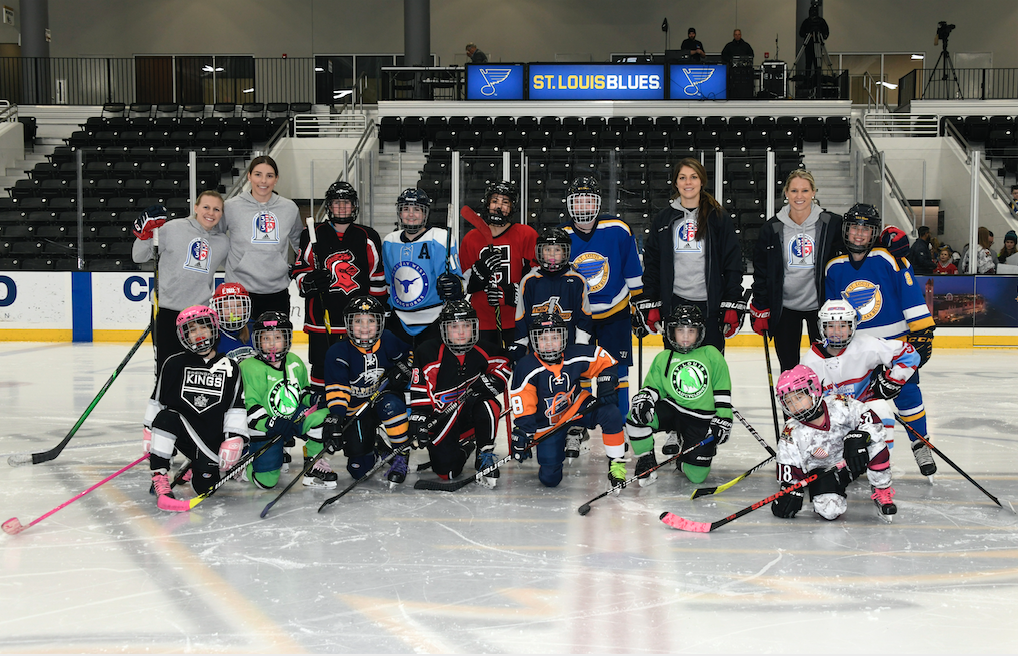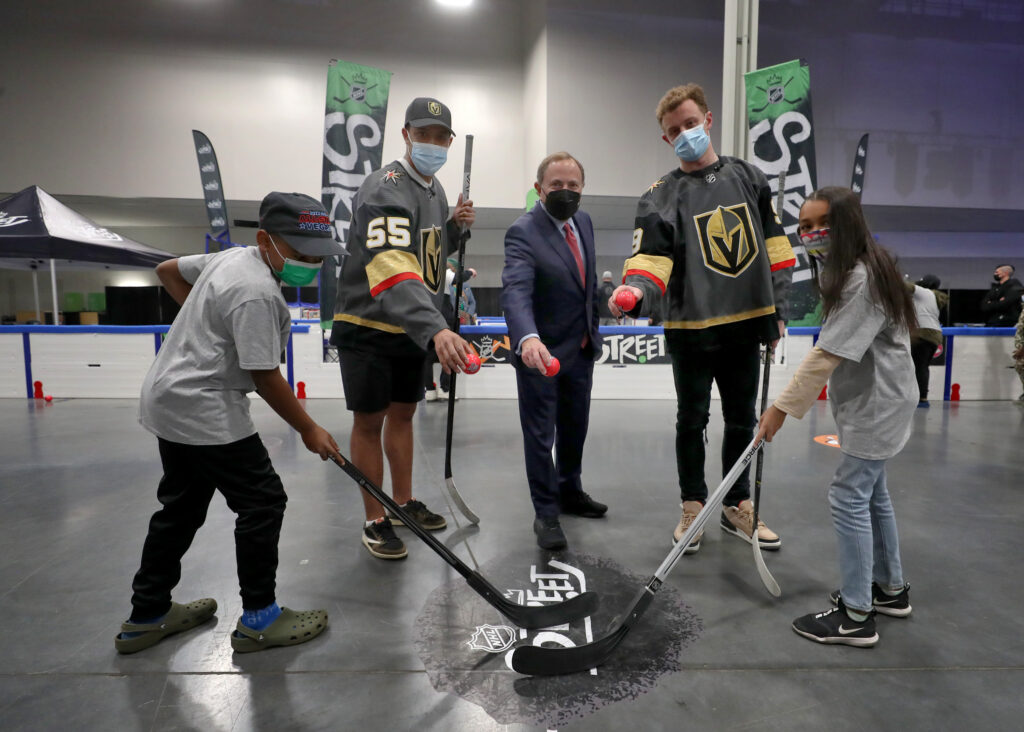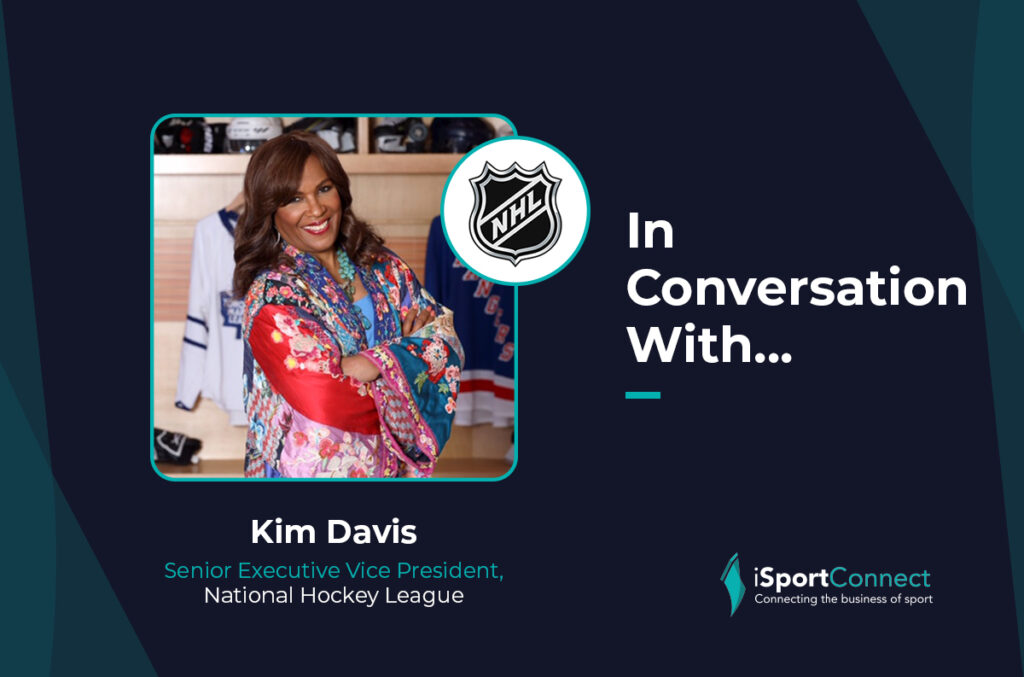“The first step in any change process, particularly for institutional systemic change, is creating a rallying cry”
June 16, 2022
Earlier this year, Kim Davis was named as one of iSportConnect’s Influential Women In Sport for 2022. As the League’s season culminates with the Stanley Cup Finals, Ben Page recently spoke to Kim about her career, her role at the NHL and the evolution of the sport to integrate new fans.
Kim, tell us a little about your background growing up and your career before making it to the NHL?
I was the oldest of two younger brothers. I enjoyed being the boss, at least that’s how they remember it. Our father died when we were young so I grew up with my mom and her parents. My grandfather was a terrific leader in the community and I think I learned many of my traits in that area from him. Even today people talk about the impact he had on their lives.
I attended an all-female College in Atlanta, Georgia — Spelman College — known for creating and developing leaders. The early, informal leadership “training” I received from my grandfather was reinforced and deepened during my time at Spelman.
In the 80s and 90s, I pivoted through positions in investment banking, primarily with J.P. Morgan, working across a number of different roles. The industry was going through a lot of merging and acquiring, which benefitted my growth by learning to live with and thrive in periods of ambiguity and change.
“The creation of the BJK Initiative was a defining point in my career. It was through that relationship that I met Commissioner Bettman at the NHL.”
I learned a lot about myself, including that I actually like the change process. I’m comfortable with ambiguity and passionate about leading teams and organizations through those periods of uncertainty. This became a signature of my career and in many respects, my calling.
I left the financial services industry to go deeper on purpose-driven work from the seat of a global consulting firm, where I had the opportunity to work with Billie Jean King and establish the Billie Jean King Leadership Initiative. The formation of the Initiative was crucial to her legacy, but also became the platform to inform and guide CEOs and highly influential people and organizations on diversity, equity and inclusion. It was amazing to watch Billie Jean bring her expertise in sport and equality to powerful executives.
The creation of the BJK Initiative was a defining point in my career. It was through that relationship that I met Commissioner Bettman at the NHL.
I joined the NHL about four and a half years ago following consulting work for the League, in a position created for me, focused on building future growth of the sport through multicultural and underrepresented communities. This brought together traditional lines of business like community development, diversity and inclusion, youth hockey, triangulating efforts to share a common purpose and mission.
Coming from the world of banking, did your meetings with Gary Bettman and your work with Billie Jean King’s foundation open your eyes and spark your desire to want to be a part of the sports industry?
Spending time working with a legend like Billie Jean helped me to understand the power and influence that sport can have on changing mindsets in society more broadly.
“We needed a common understanding of demographics – data to go along side the storytelling, to meet people where they are and provide and compelling and convincing argument for why they too should prioritize this work.”
The way Billie Jean was able to influence CEOs — because of the respect that she garnered as a result of both her on and off-court courage — has changed perceptions and lived experiences for women and the LGBTQ community in previously unimaginable ways.
In your role you are looking to diversify the growth of the NHL audience for people from different backgrounds, an area it has in the past struggled to gain access to. What are some of the things you’ve been implementing?
The first step in any change process, particularly for institutional systemic change, is creating a rallying cry so that, regardless of where people sit in the organisation, they see and feel the imperative for the change relative to their spheres of influence.
At the NHL, this meant getting people in business and hockey operations positions to understand the demographic shifts that are occurring across North America which have significant implications and impact on the growth of our sport.

Achieving diversity means starting with inclusion. We’re building competencies and skillsets internally so that hockey can offer a more welcoming fan experience in stadiums, approach communities in ways where they feel a sense of trust and belonging, and engage multicultural youth with relevant and exciting opportunities to participate.
We needed a common understanding of demographics – data to go along side the storytelling, to meet people where they are and provide and compelling and convincing argument for why they too should prioritize this work. We put together an amazing study in partnership with the Brookings Institute and Professor Bill Frey, who I have known for many years. We took all of the longitudinal demographic work that he had been doing over the past 20 years and framed it within the context of the sport of hockey. That piece, even today, four years later, is still extremely relevant.
More the two-thirds of NHL markets already had local population demographics where this idea of minority was a misnomer for millennials and Gen Z. Minorities were (are) the majority. Our Clubs hadn’t really yet integrated this data in ways where they could be proactive about the demographic shifts and its impact on fanbases. But we’ve reached the point now where NHL Clubs understand the urgency for DEI work across their employment, marketing and youth engagement efforts… for the good of their business today and every day after.
You’ve said that sport is finally recognising the power of social impact, how much did that resonate with you personally when entering the NHL and initiating these programmes, using your experience to blend it all together?
When I ran the J.P. Morgan Chase Foundation, where we had a $300 million budget, we made strategic investments in communities = we believed would provide the future growth for the institution. It built goodwill and brand perception, but also empowered and uplifted people that needed the access and the opportunity. That idea of doing well and doing good — using your philanthropic platform as a kind of capital — was something I was very familiar with.
The NHL’s evolved philanthropic endeavours – through the NHL Foundation – is quite similar, in that we are beginning to invest more heavily through programs and partnerships to uplift underrepresented, underserved and historically marginalized communities, providing them with the access and opportunities to experience the game .
Having achieved so much throughout your career, are there any moments, or specific challenges that you’ve encountered that are particularly memorable to you?
My paternal grandmother was the first woman to get her PhD from Harvard in 1939, so you can imagine what her journey was like.
“Business has become far more intentional in recognising, developing, promoting and empowering minority groups, but women in particular.”
Both her and my maternal grandfather, in their very different styles, would always say to me that being a fearless leader doesn’t mean that you aren’t scared. It doesn’t mean that you don’t have fear. It means that in spite of fear, you find ways to continue to move forward, and that takes courage, resilience and persistence. Those messages were delivered to me as early as I can remember. And my grandfather never talked to me in any way that limited my potential based on gender, he made me feel like I could accomplish anything.
Of course I’ve had direct encounters with racism, and career moments where I needed support and sponsorship, and there were people who rallied for me. I derived a new level of strength and confidence from these moments and mentors. I came to see myself as a servant leader and understood that humility was a strategic asset. I’ve done my best to conduct my career and life in that way. Yes, there have been many obstacles, but I have not seen them as deterrents to my goals, my passion and my purpose.
While you have grown personally during your career and overcome those challenges, how do you feel change has been progressing when it comes to people from wider backgrounds working their way into industries, whether that’s in business or sport?
Business has become far more intentional in recognising, developing, promoting and empowering minority groups, but women in particular.
Within the gender demographic, women of colour are growing at a faster rate than any other group, so it makes sense that organisations and companies recognise what their future talent pool looks like. More women, for example, are going to graduate from PhD programmes than we’ve ever seen. There is ample data and evidence suggesting good reason to invest and focus on this segment. This is the good news, and you are finding that women are taking on leadership roles and supporting other women. That’s a really, really important aspect.

When I started my career almost 40 years ago, there were so few women and people of colour that it felt like a constant struggle to fight and claw for your position. This mythical fixed pie mentality as it relates to diversity in the workplace is finally sunsetting in business.
Having said that, we have a lot of work to do, particularly at the intersection of gender, race, ethnicity and sexual orientation. We still have work to make people feel comfortable in being their authentic selves, particularly in workplaces. If people bring their authentic personalities, the output they produce is going to be far greater, and their work with colleagues can lead to exponential organizational impact.
What is the NHL doing in terms of creating programmes to bring people into the industry and into the company from minority backgrounds?
We’ve learned many things over the past couple years that I think are tremendous insights. Our female advisory board –a group of women across all parts of the sports industry — have evolved our approach to youth hockey and female fan development.
One is the development of a female coaching development programme, with the NHL Coaches’ Association, where we have identified over 150 women who are being developed to ultimately become the future general managers and coaches of NHL teams. That’s a pipeline of talent and I suspect given the number of women that are already in assistant coaching roles we’re going to see breakthroughs in the next few years. This program was so successful that a BIPOC coaching programme was put in place to mentor 50 Asian, Black, Latino and Indigenous coaches to further build that pipeline of talent.
“Integrating with music, fashion and food, we believe street hockey will provide a launching pad for cultural availability.”
We also developed a programme for girls to identify female hockey players who can be mentors and sponsors for young girls playing hockey across North America. We know that representation matters, and this has resulted in girls hockey growing at a faster rate than any other sport and almost tripling growth from a male hockey perspective – that’s not by accident.
Those are just a few examples that are underway. We have a street hockey programme that we just launched as a way to engage new communities in unprecedented ways. Integrating with music, fashion and food, we believe street hockey will provide a launching pad for cultural availability.
Is there any advice that you would give to young women in particular who are looking to enter the sports industry in particular?
There are huge opportunities right now in sport and I encourage young women, particularly women of colour, to get involved. The sports industry needs your voice, your experiences and your talent. Put hockey and the NHL on that list of sports that you see as an opportunity. With 40% of our current fan base within the sport women there’s nothing but future opportunities for women both on and off the ice.

